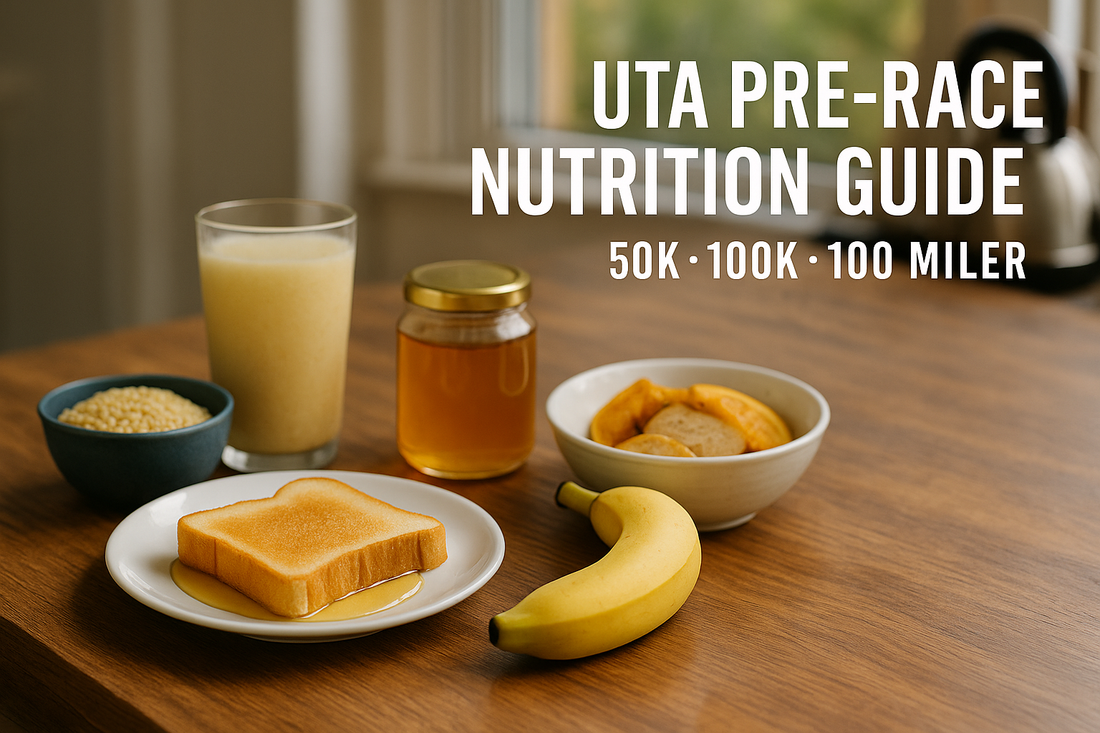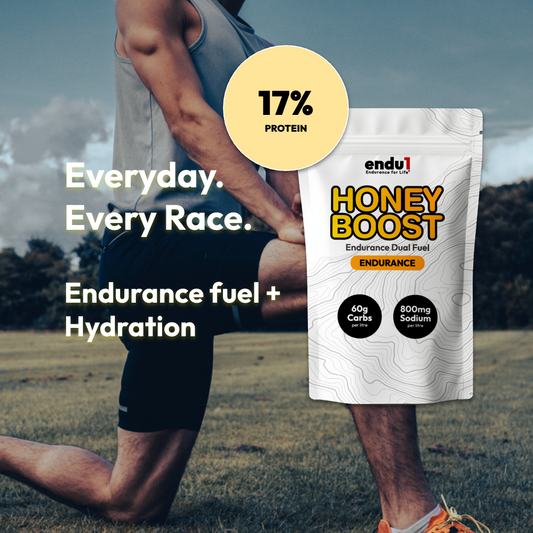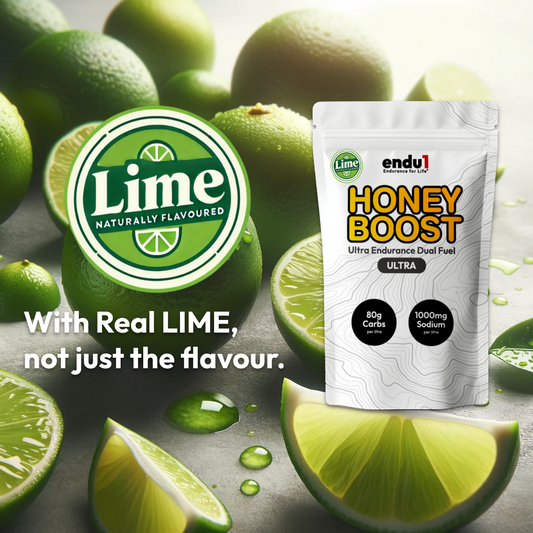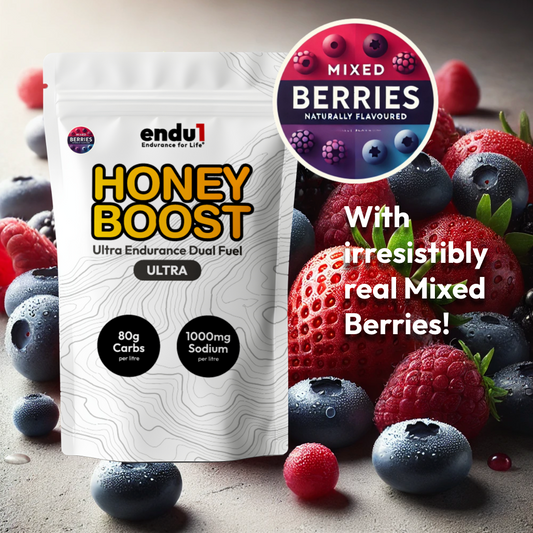
UTA Pre-Race Nutrition Guide: Fuel Smart for the 50K, 100K & 100 Miler
Share
The Ultra-Trail Australia (UTA) is one of the most iconic trail races in the Southern Hemisphere. Whether you're lining up for your first UTA50, testing your grit in the UTA100, or tackling the beast that is the UTAMiler, nutrition will play a critical role in how you perform and feel on race day.
Pre-race fuelling isn't just about carb loading the night before – it's about preparing your body in the days leading up to the event so you're starting with a full tank and minimal gut stress. Here’s your Endu1-backed guide to dialling in your nutrition for each distance.
🔑 1. The Week Before the Race: Prime the Tank
Main Goal: Top up glycogen stores, reduce fibre and gut irritants, and maintain electrolyte balance.
- Increase carbs gradually over 3–5 days before the race. Aim for 5–7g carbs per kg of body weight per day for the 50km, and up to 8–10g/kg for the 100km and miler.
- Prioritise easy-to-digest, high-carb foods: white rice, pasta, potatoes, oats, bananas, honey, and smoothies.
- Avoid new or spicy foods. Gut stress and bloating are the last things you want on race day.
- Add a daily electrolyte drink (like Endu1 Honey Boost ULTRA diluted) especially if it's warm or if you've done any training.
- Test your race fuel and breakfast in a long run to confirm what your stomach agrees with.
🥞 2. The Day Before: Keep It Simple
Main Goal: Maximise glycogen stores without overloading the gut.
- Stick with low-fibre, high-carb meals you’ve eaten before.
- Example dinner: white rice, grilled chicken, roasted pumpkin, a slice of white bread with honey.
- Hydrate throughout the day, sipping fluids rather than chugging.
- Avoid alcohol, large amounts of caffeine, and heavy protein/fat loads.
- Eat an early dinner (ideally by 6–7pm) to allow for digestion and restful sleep.
🍌 3. Race Morning: Top Off and Settle In
🕓 When to Eat
- Eat 2.5–3 hours before race start if possible.
- Add a small top-up snack 30–60 minutes before (e.g. banana with honey, a few sips of Honey Boost ULTRA, or a small energy bar).
🍽 What to Eat
- Aim for 1–1.5g carbs per kg of body weight.
- Choose familiar, low-fibre, moderate GI foods.
- Example breakfast: white toast with honey + banana + small coffee or tea.
Don’t overdo it! You’re fuelling to top off, not load up. If you’re nervous, go lighter and drink some carbs instead.
⚖️ Tailoring by Distance
🟡 UTA50
- You don’t need to over-carb load, but ensure glycogen stores are full.
- Race morning fuelling is key – treat it like your long training days.
- Hydration with sodium is important if it’s warm (sipping ULTRA can help).
🟠 UTA100
- 3–4 days of carb loading is ideal.
- Avoid high-fibre and heavy meats by 48 hours out.
- Ensure your electrolyte intake is consistent – low sodium pre-race can lead to cramping or nausea.
🔴 UTAMiler
- Nutrition in the 3 days before is as important as race-day fuelling.
- Be very deliberate with your food choices – test them in advance!
- Consider multiple small meals/snacks the day before to reduce bloating.
- Pre-load sodium with something like ULTRA in the morning and evening (750–1000mg sodium) before race day.
💡 Bonus Tips
- Limit fibre 24 hours out – avoid raw veg, seeds, legumes, whole grains.
- Practice your race-day breakfast multiple times in training.
- If prone to nerves, liquid carbs (smoothies, diluted Honey Boost, juice) are easier to tolerate.
- Avoid anti-inflammatories unless prescribed – they can cause gut issues.
- Bring your own breakfast gear to your accommodation if racing from interstate.
🔁 Recap Checklist
✅ Start carb loading 3–5 days before
✅ Avoid fibre and fatty foods the day before
✅ Eat a familiar breakfast 2–3 hours pre-race
✅ Hydrate gradually – don’t overdrink
✅ Bring emergency snacks just in case
Ready to Go?
UTA is as much about preparation as it is about perseverance. Nail your pre-race nutrition, and you’ll be giving yourself the best possible start – physically and mentally.
Fuel smart, run strong – see you on the trails!







